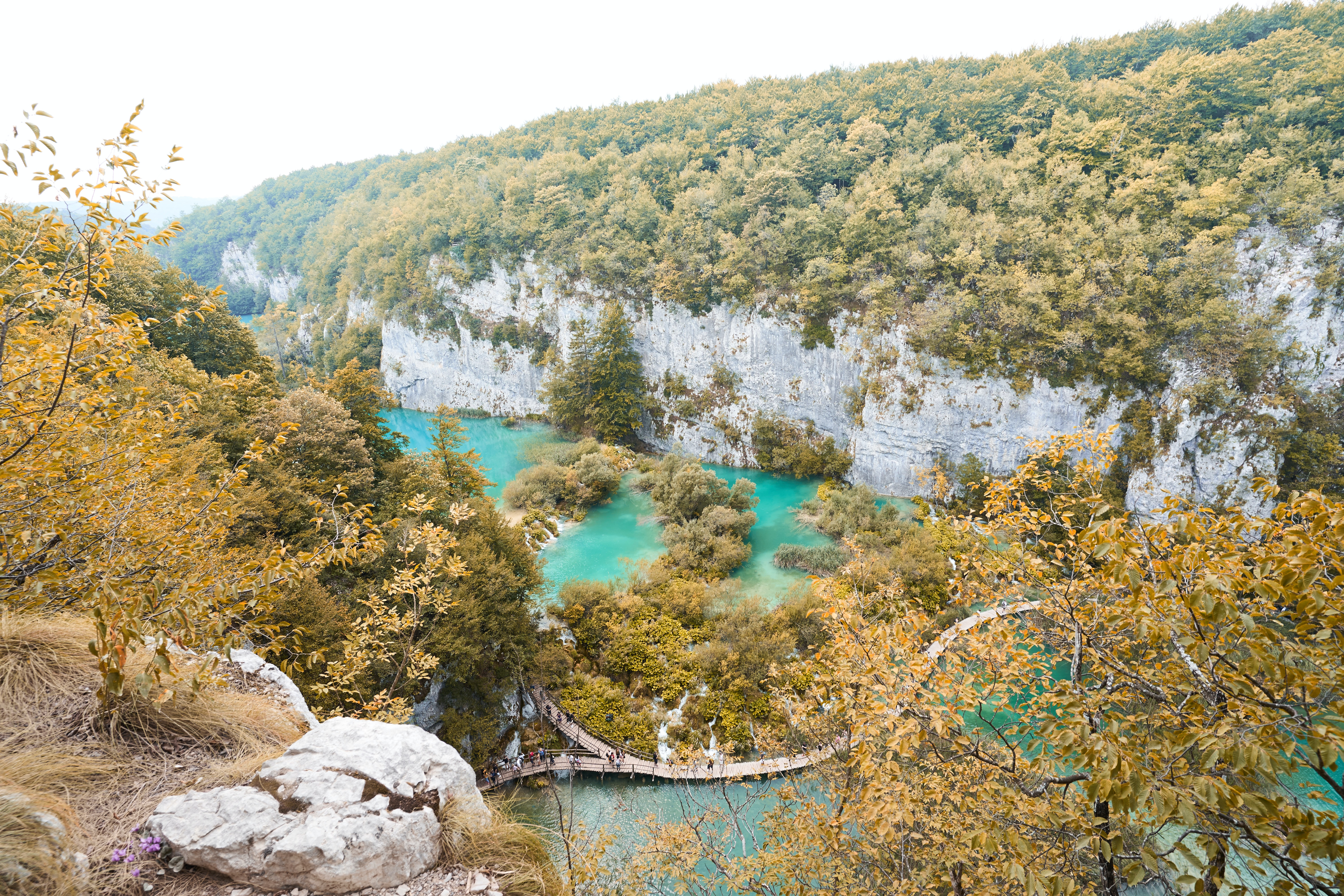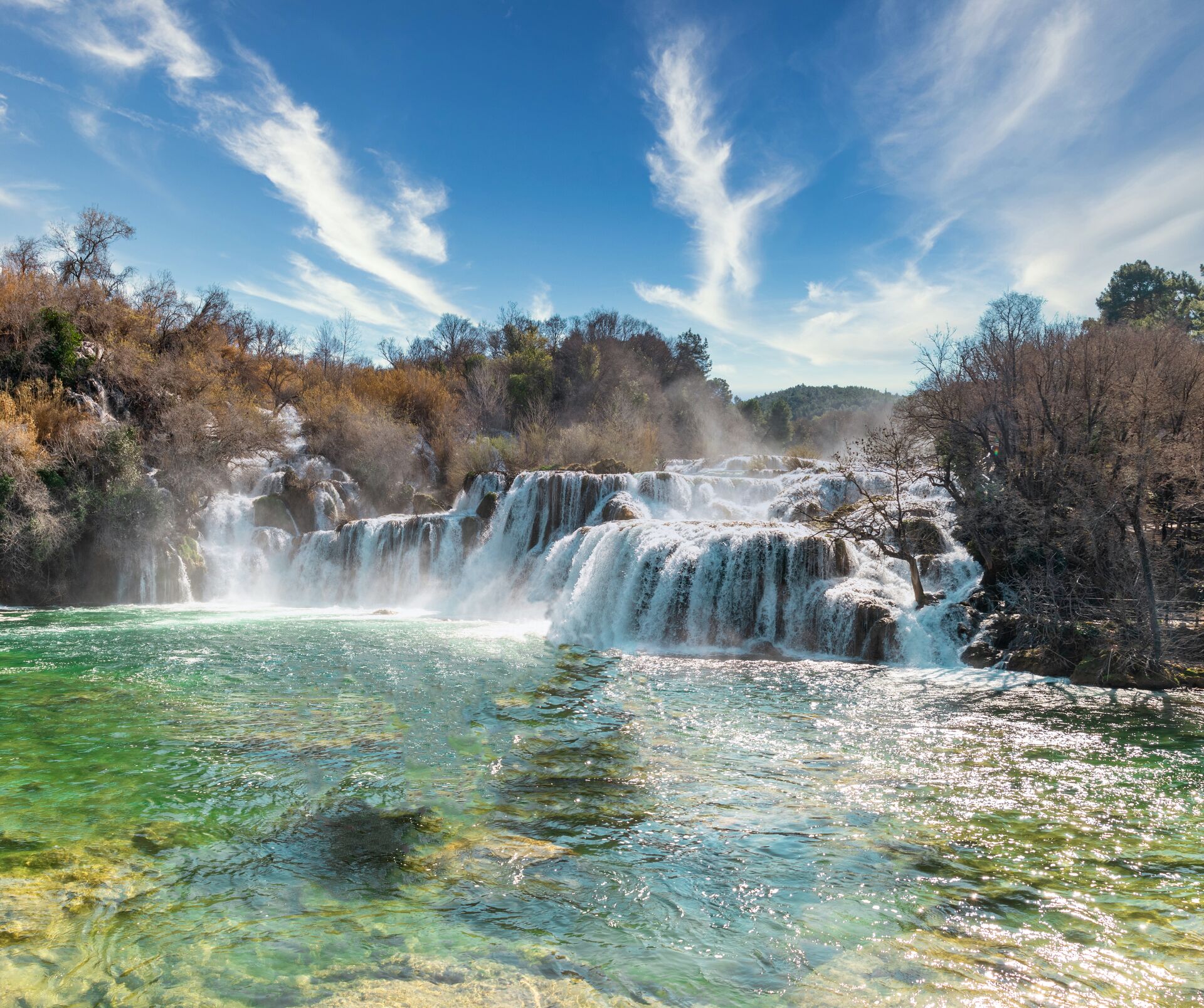With its mesmerizing cascades and myriad of lakes, Plitvice Lakes is the most famous and instantly recognizable of Croatia’s National Parks. A natural phenomenon of outstanding beauty, this series of 16 lakes and waterfalls are the jewel of this unique UNESCO World heritage site. However, behind the scenes of the dazzling waters there is a lot more to know about the park, one of the most alluring of Croatia’s attractions.

To learn more about the park and how it is being protected for future generations, we spoke with local expert Katarina, who has been leading tours in Plitvice for the last seven years. She tells us more about how the wildlife, how the park approaches sustainability and conservation, and explains the science behind those fairy-tale cascades.
For travel inspiration: Croatia destination guide
Plitvice is huge, but much of it is off limits to protect the wildlife

The oldest and largest of Croatia’s national parks, “Plitvice Lakes National Park is much bigger than many people think,” explains Katarina. “Top of the list of things to do in Croatia, when people say they went to Plitvice, they really mean they went to the lake area. The park spans 74,000 acres and the lake area is only about 2% of that.”
Plitvice Lakes National Park safeguards diverse flora and fauna, including endangered species such as brown bears, lynxes, and rare bird species. Habitat protection and restoration projects help maintain the delicate balance of the ecosystem.
“Visitors can do a little bit of hiking, but the park’s policy is not to actively advertise any of the paths that you might take deeper into the forests,” she says. “Around 80% of the park is forest, and this is left to the Croatian wildlife. There’s also no camping in the park so you cannot stay overnight, and you’re not allowed to have campfires.”
Discover this on: Country Roads of Croatia
Bears, Wolves and Wildcats

“The park is home to lots of wildlife, most notably three largest European beasts live here – the Brown Bear, the Grey Wolf and the Eurasian Lynx,” Katarina says. “The Brown Bear is the logo of the park and at any point in time there can be up to around 50 bears living here. There are also three packs of grey wolves living within the borders of the park.” Plitvice is currently tracking a young wolf through GPS to learn more about the species’ movements, just one of the conservation efforts of Croatia’s national parks.
“However, due to the size of the park you are more likely to see smaller animals, and lots of fish! You may see otters, crawfish, little water snakes, frogs, different types of birds and bugs and butterflies. The Eurasian Beaver also lives in the park but is very rare.”
Restoring the lynx population

“Now a key project is an active effort to restore the lynx population in the park through the LIFE Lynx project. The problem with lynxes in Plitvice Lakes National Park is that they have a very small gene pool. The species was instinct in Croatia in the 70s and, when reintroduced to the park, there were only a couple of full-grown males. To diversify the gene pool, they’re bringing in new lynx males, mainly from Hungary and, most recently, from Romania.”
Plitvice has always enjoyed solitude
“People always lived in Plitvice, it was not a case of someone just stumbling upon it one day, but we’re fortunate that the entire area was not very densely populated throughout history,” explains Katarina of this, one of the most historical of Croatia’s national parks.
“Plitvice was also on the border with the Ottomans, so when they invaded in the 16th century, it was pretty much left alone. The terrain here, hilly and mountainous, also made it inconvenient on which to build anything with the technology available over the centuries. This meant, for example, that it wasn’t very greatly impacted by the industrial revolution. And, during the 20th century, it also wasn’t very densely populated.
“We were lucky that a lot of significant, educated people and scientists recognized the significance of the place in the second half of 19th century. So, when the 20th century rolled around, when World War I and World War II happened, there was actually a system in place to protect the area. Se there was a cascade of events that made it possible for Plitvice to survive as a natural wonderland up until this point in time for us to observe it.”
You may also enjoy reading: Pearls of the Adriatic: discover the world of oyster cultivation in Croatia
A hydrogeological phenomenon

“The rock formation of Plitvice is a very interesting hydrogeological phenomenon that doesn’t happen very often, though it does happen in other places in the world,” she tells us. “To form this landscape, you need to have exceptionally clean water, and you need to have karst (limestone or calcium carbonate).
“You can find karst everywhere in the world, around 15% of the Earth’s surface is karst, but with the way Croatia is positioned on the Balkan Peninsula, karst is overrepresented – almost half the country is karst. It’s very similar to the percentage of karst in Kentucky, USA, where you will find the Mammoth caves.”
You may also be interested to read: Brewers, bakers and employment makers: meet the wander women of Croatia
The lakes are actually a river

Although maybe the most renowned Croatian lakes, Plitvice lakes are in fact not quite what they seem. “We call them the Plitvice lakes, but actually it’s a river,” Katarina says. “The entire system is a very slow, very wide river, although thousands of years ago it was much narrower.
“There are two rivers that are the main source of water, one of which is in fact a karst spring. So, water accumulates underground, and then it springs back up and feeds the first lake at the top, which cascades down. It is however difficult to pinpoint exactly where the water is coming from.”
The waterfalls are actually natural dams
“Over time, natural dams started forming. So, the waterfalls that make this one of the most unique of Croatia’s national parks, are actually just water pouring over these natural dams,” she says. “And these are formed by tufa.
“In order for tufa to form you need exceptionally clean water. As explained before, there were not a lot of chances to pollute the water system throughout history, so the water has a very low concentration of organics. That’s the main reason why we don’t allow people to swim in the lakes – to prevent organic pollution of the water.”
You may also enjoy reading: An expert’s guide to finding your perfect island on Croatia’s Dalmatian coast
Mineral rich waters

“The second thing that is needed to form tufa is water that is very rich in minerals, and the water here in Plitvice is water over saturated by calcium bicarbonate,” she continues. “When it rains in a karst area, the limestone gets corroded and turns calcium carbonate from its insoluble form into its soluble form, which is calcium bicarbonate. The water also needs to be a little bit alkaline, here it has a pH of around 8.5.
“When this water starts rushing over obstacles, like a patch of moss or a tree trunk, it comes into contact with oxygen. The difference in pressure then allows the minerals to precipitate onto the obstacle, turn back into its insoluble form, calcium carbonate, and calcify on the obstacle. When the first layer of tufa formed, another layer of something will grow on top of it, calcify and so on.”
You may also enjoy: How to spend a sunshine-filled 48 Hours in Hvar, Croatia
The role of vegetation
Leaders in sustainable practices
Alongside the park’s strict conservation efforts, to be found in all of Croatia’s National Parks, Plitvice Lakes National Park has always been a leader in sustainability. Katrina explains that “From 2015 plastic cutlery was replaced in the park’s facilities and in its hotels and restaurants. This was before the big push to paper straws and paper cups a few years ago. There is also a stop the food waste initiative, actively informing guests about managing food waste and litter”.
Sustainable energy practices are adopted within the park, with renewable energy sources like solar panels and hydroelectric power used to reduce the carbon footprint and promote a cleaner environment.
“The number of people visiting the park is also limited, with staggered entrance times. With all these systems in place to protect the park and its wildlife from being over-impacted by tourism, the future looks bright. But it is something that is worked on every day.”
You may also enjoy: A first-hand account of our first women only tour to Croatia
MAKE TRAVEL MATTER® in Plitvice

Travel with Insight on Country Roads of Croatia and explore Plitvice Lakes National Park with a choice of two MAKE TRAVEL MATTER® Experiences. You can choose to join a Local Expert to explore Plitvice National Park and learn about their research to monitor the natural habitat of species. Alternatively, you can meet the industrious women of the Tara Community Centre, who produce handicrafts, enabling employment and engagement in the community. Either way, know you are making a positive impact through your visit.
Read more: Healing the wounds of war through the power of community: the Tara Community Centre



